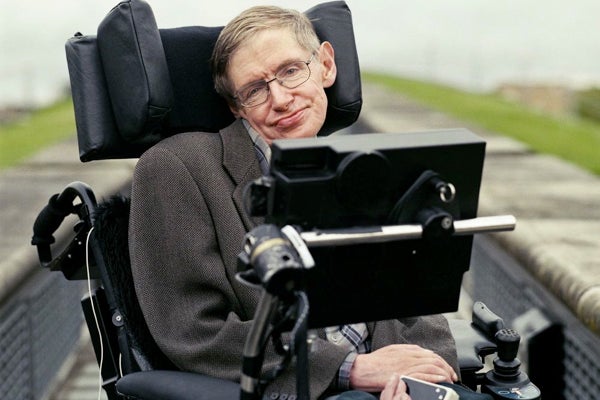
Stephen Hawking observed a milestone when he turned 75 earlier this year. A man who has achieved remarkable things – and shown a remarkable nature – from the very beginning of his career, his advancements combine work in the fields of gravitation, cosmology, quantum theory, thermodynamics and information theory. This synthesis of disciplines in search of answers secures his place as the leading genius of modern physics.
Part of Hawking’s legend rests not only on his influence, but also to his willingness to harness – as well as to push forward – the technology that has helped to make that influence possible. Dr. Hawking’s achievements are so remarkable and his interfacing with technology so seemingly natural, that it begs the question, “what benefits does that interface hold for the rest of us?”
With the advent of cognitive technologies, we are seeing a flowering in AI-based advancements: self-learning computers, conversational interfaces (like Siri), and self-driving cars that represent technology serving humanity. We have designed tech in our own image so that it “behaves” more and more like humans, but, as technology becomes prevalent in our lives, we behave more referentially to it and are viewed by some as victims being shaped BY technology. Trying to leverage this technological determinism for gain, there are even companies offering “digital detoxes,” with the goal of achieving momentary respite, metaphorically freeing space on our “hard drives.”
But academic interest in AI grows rapidly. Our analysis shows that global research on machine learning has doubled, going from 6,766 publications in 2011 to 13,405 in 2016. Within the AI field, themes including effective computing, knowledge representation and deep learning have emerged as the most popular. In the case of deep-learning research, data shows a quintuple increase in global research output in five years.
This profusion of research indicates an increasing willingness to explore a myriad of interfaces with AI. This is positively revolutionizing how we make decisions and live life, making AI an extraordinarily powerful tool for improving our connections to each other in ways that could only be imagined just a few years ago.
Consider the impact on medicine. As Satava and Ellis wrote as early as 1994, “The increasing use of robotics, computers, and virtual reality…will become easier to use and enhance the surgeon--the technology must adapt to the surgeon, not the reverse.” Since then, medical technology has flowered, designed to meet human - read: patient - needs first. Robotic surgery has become commonplace and conferred immense benefits. Electronically controlled prostheses and functional neuromuscular stimulation radically transformed limb-replacement technology, and amputees’ interface with technology becomes ever more beneficial and less noticeable as part of that benefit. The use of computer graphics, 3-D imaging, magnetic resonance imaging, and laser technology point toward new directions in medicine in disciplines across the board, with all technologies created or adapted to meet caregiver and consumer need – or abandoned by the wayside.
And, while medicine has embraced artificial-intelligence-based data analytics with less alacrity than the financial industry and other sectors, the benefits of machine learning algorithms are allowing physicians to treat patients based on a combination of their own knowledge and data from the cases of all other patients facing the same disease. Predictive analysis leading to early intervention is an unheard of benefit; for example, Google DeepMind has created a machine learning algorithm designed to detect diabetes and macular degeneration by analyzing case data from a million patients, allowing doctors to treat before these conditions emerge. As part of the interface, AI is providing doctors with predictions based on deep data analysis, which from the outside may look very much like experience-based deduction.
Predictive analysis also works at micro-level interfaces. Dr. Hawking communicates through an open-source program called ACAT, which provides a software keyboard on his computer screen. He selects letters by moving a cursor with his cheek (that movement is detected by sensor on his eyeglasses). ACAT’s SwiftKey word prediction algorithm, programmed with Dr. Hawking’s writings, offers word choices after he types only a couple of characters. When he has a whole sentence, Dr. Hawking sends it to a speech synthesizer. His interface is personal, highly customized and built to help him deal with the particular challenges of motor neurone disease. Most importantly, it frees him to communicate and connect in way that wouldn’t have been possible in the recent past.
Technology does not determine human action; human action shapes technology. As we push forward into this age of the marriage of data and technology, we must apply the basic principle that technology needs to serve humanity, first and last. Armed with that guiding principle, we can create opportunities for individuals and communities to achieve, while at the same time, overcome the fear that too often accompanies the introduction of complex ideas, and advance with positive optimism and open curiosity.
